March 24th, 2024 - Drive to Monteverde
In the morning, we enjoyed the “shower with a view” one last time with an unobstructed view of the Arenal:
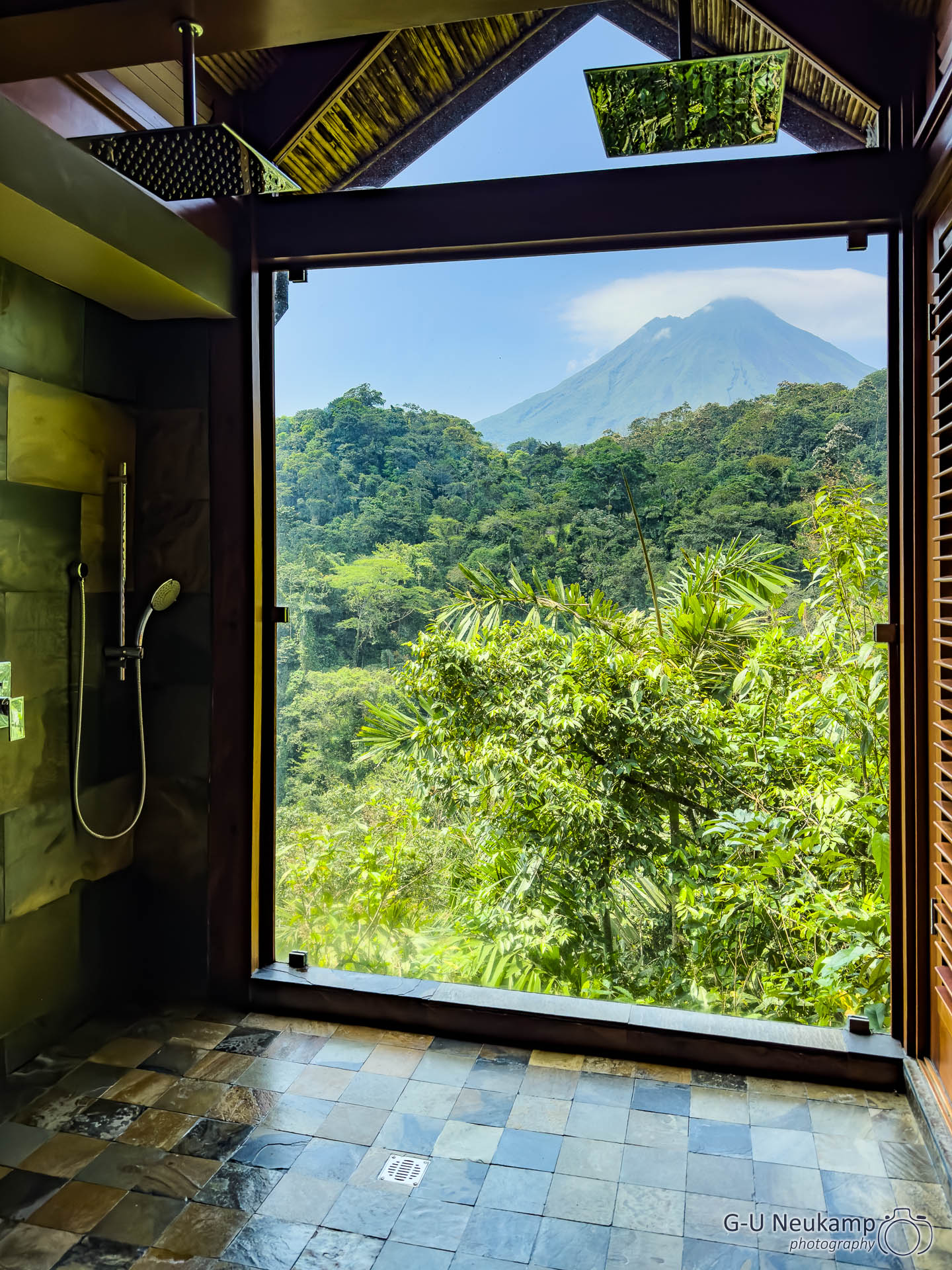
After a delicious breakfast, we drove on. The Amor Arenal Lodge was really fantastic, so we are excited to see what happens next. Our next destination is Santa Elena at the “green mountain” - Monteverde.
The Monteverde Biological Reserve (Reserva Biológica Bosque Nuboso Monteverde) is a protected area in Costa Rica. The reserve covers around 10,500 acres and is home to Costa Rica’s impressive evergreen tropical cloud forests. It is located in the Monteverde region in the mountainous northwest of the country, just two and a half hours’ drive from the capital San José. The region is best known for its biodiverse cloud forests.
A large part of today’s reservation was originally acquired by a group of US Quakers who immigrated there in 1951. They wanted to settle here in order to avoid taking part in the Korean War, as they reject any military service in accordance with their religious principles. From 1972, parts of the area were endangered by illegal settlers. Against this background, George Powell, a local scientist, and parts of the Quaker community and environmental organizations joined forces and acquired a 328-hectare area. The land thus acquired was placed under the administration of the Centro Científíco Tropical (Tropical Science Center). Through donations and further additions of land from the Quaker community, the reserve has been continuously expanded.
After a bumpy and very winding drive (3 hours for just under 100 km), we finally arrived at our next stop, the Monteverde Lodge, well shaken - but safe and sound. Here, too, we had beautiful rooms. From the terrace, we had a beautiful view of the green surroundings.
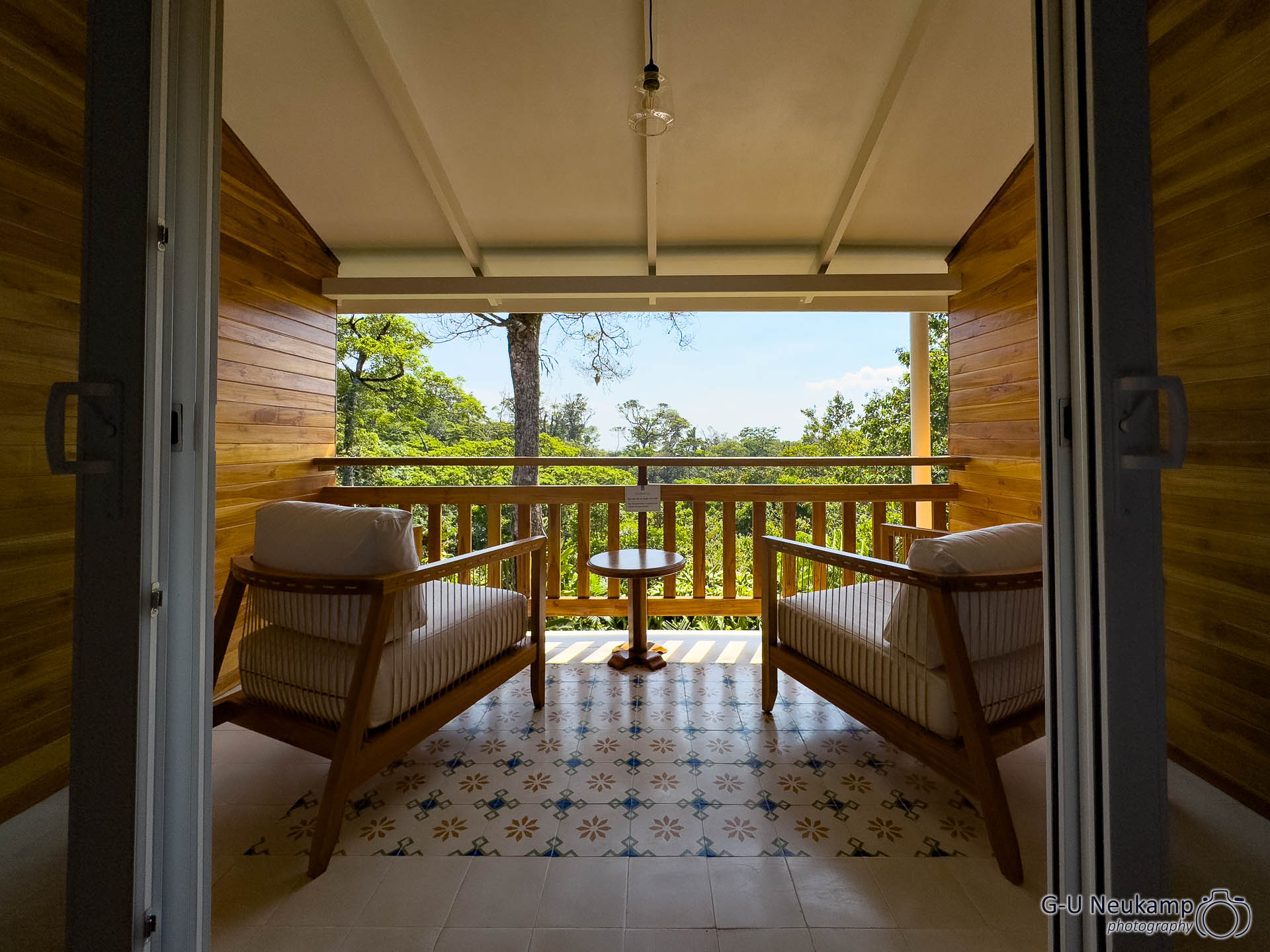
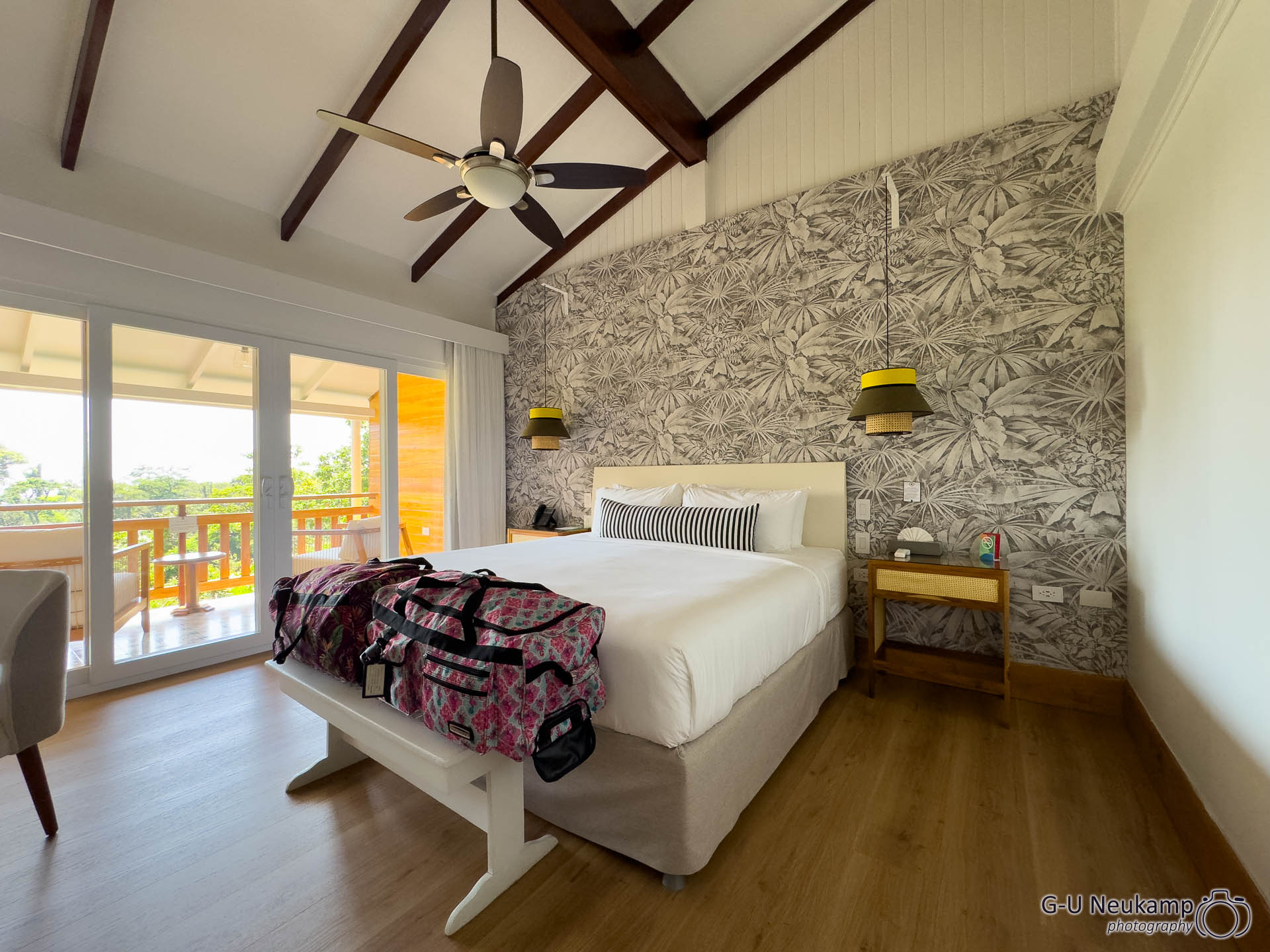
Monteverde is famous for its cloud forests - but there were no signs of fog when we arrived. Instead, we had almost 30 degrees and sunshine.
First, we walked through the grounds around the hotel. There are a few trails there, so we were able to stretch our legs after the long car journey. Then came happy hour, where we relaxed with some cool cocktails.
Für das Abendessen hatten wir einen Tisch im Hotelrestaurant reserviert. Abends wurde es erfreulicherweise deutlich kühler, wir saßen sogar neben einem offenen Kaminfeuer. Monteverde liegt immerhin auf über 1.300m über dem Meeresspiegel.
The food was excellent again and we enjoyed another good red wine. Here are some pictures to whet your appetite 😉
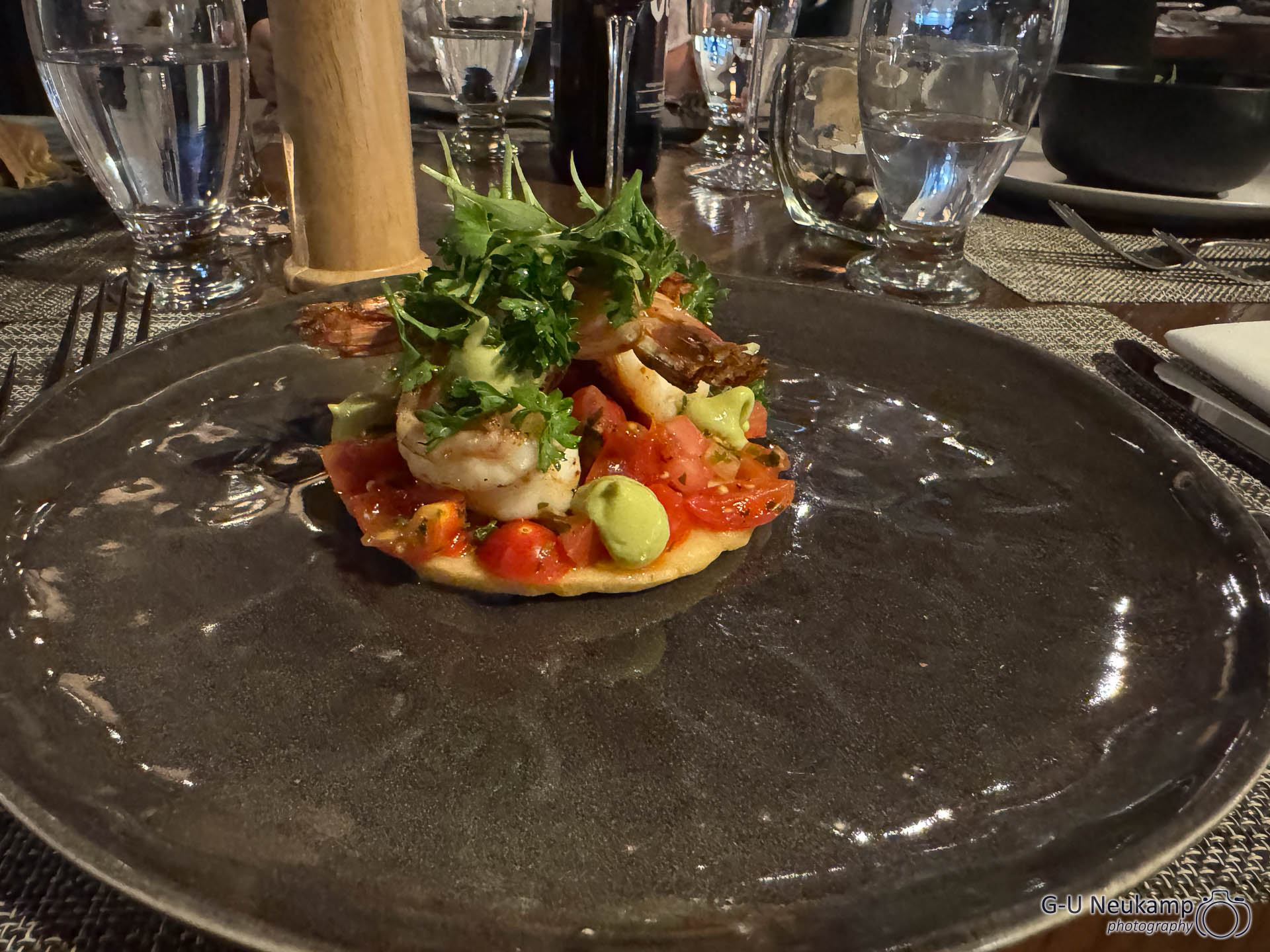
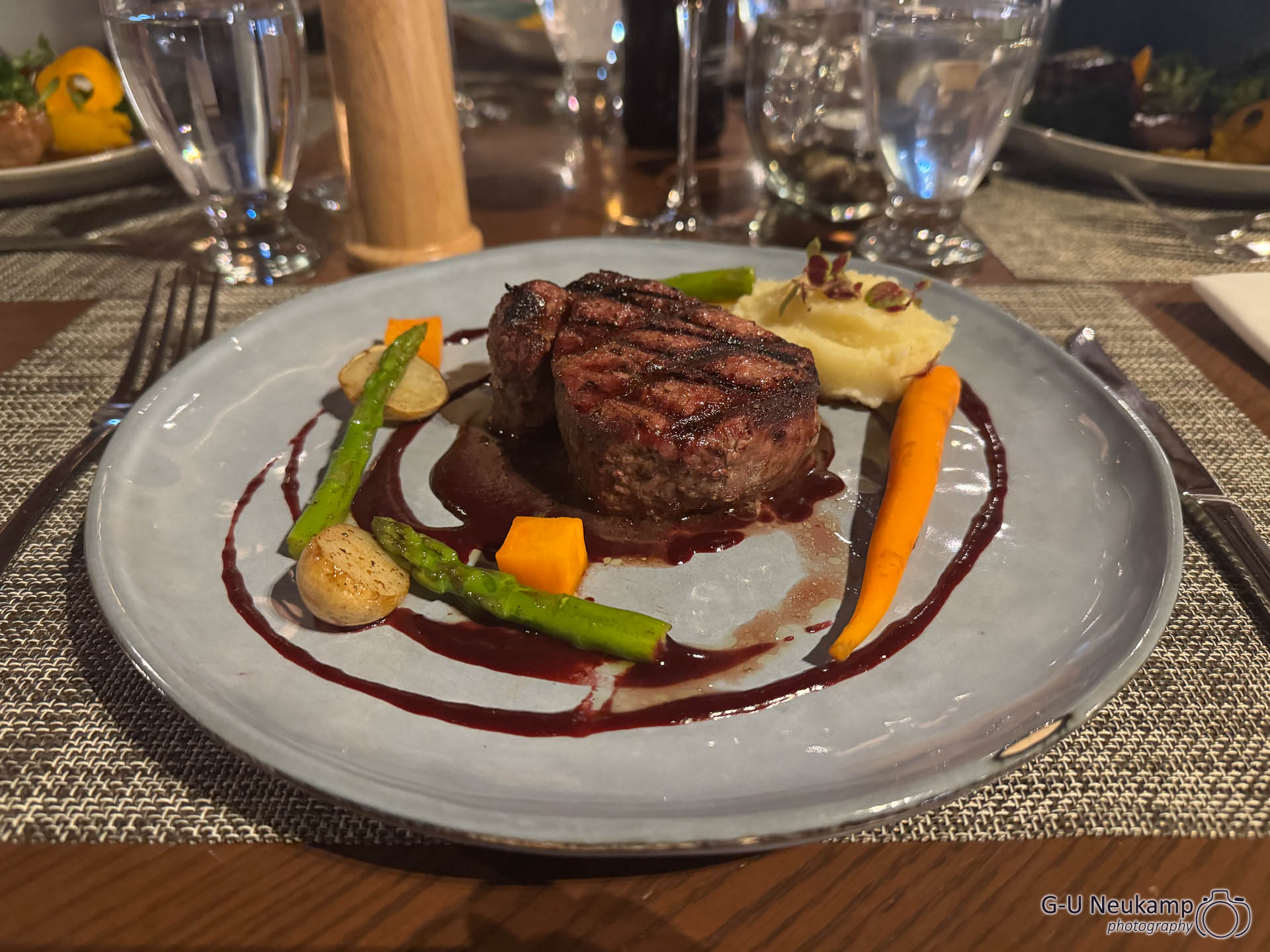
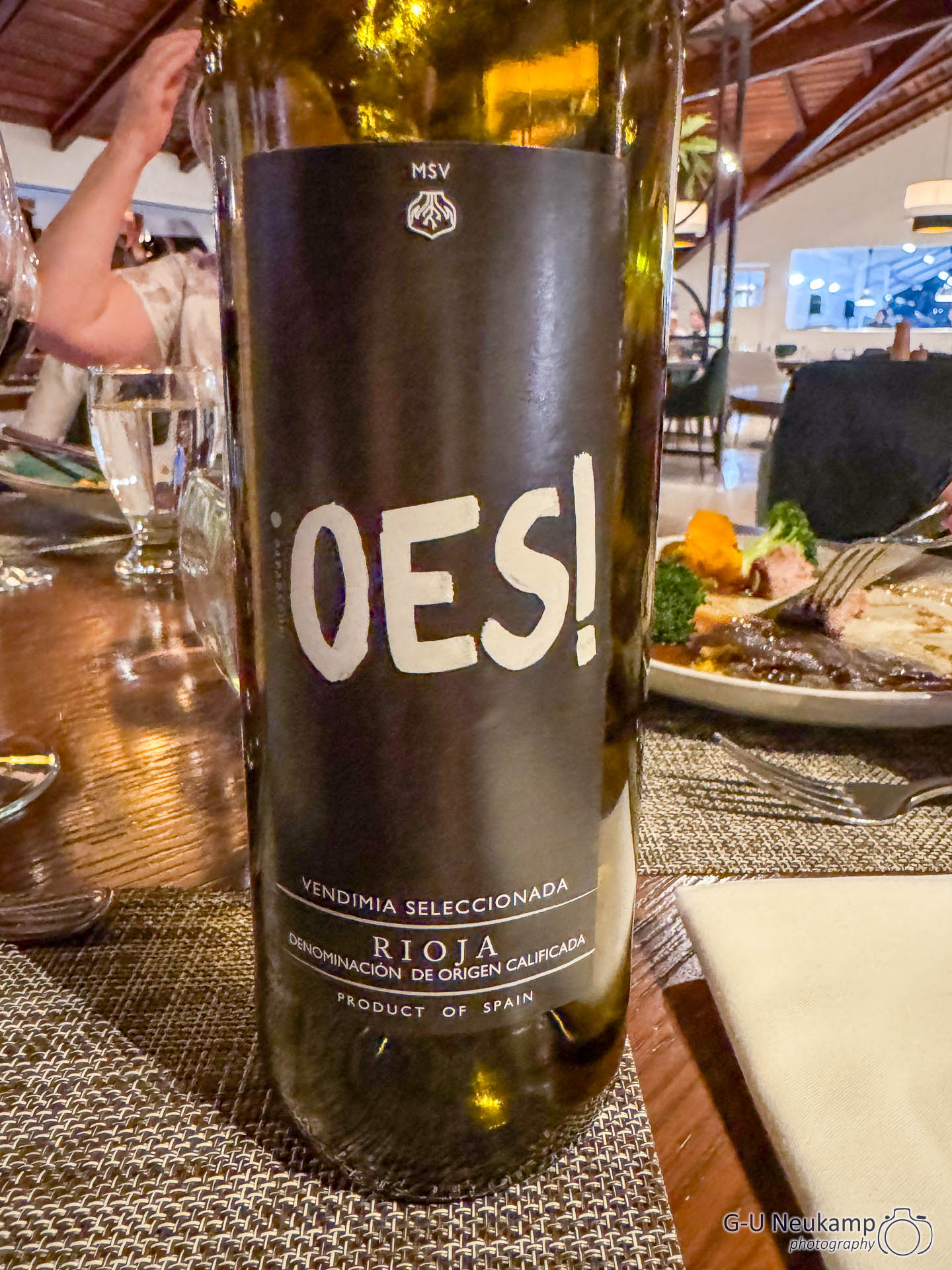
cAlthough we hadn’t actually done very much that day, we fell into our beds dead tired afterwards. We had booked a guided tour of the nature reserve for the next day at 7:30am. So it’s time to get up early again…
March 25th, 2024
We all slept well and got up early again this morning as we can visit the nearby cloud forest park starting at 7:00 am. So breakfast at 6:00 again. Everyone is probably now thinking, how can you be so stupid as to get up at the crack of dawn all the time - on vacation?
But that’s the only way you can see a lot and it’s not yet so hot and crowded. Breakfast was very tasty again, including fresh fruit and yogurt with granola. I ordered pancakes this time, delicious:

It was indeed a “good day”. After breakfast, we drove to the nearby entrance to the reserve, where our guide was already waiting. We were hoping to see the rare quetzal, which lives exclusively in the cloud forests of Central America. And we were lucky.
The quetzal is one of the most impressive and symbolic birds in Costa Rica and Central America. The resplendent quetzal (Pharomachrus mocinno), which is native to the mountain forests of Costa Rica, is particularly well-known, especially in the cloud forests of the central and southern regions of the country, such as the Monteverde Reserve and Los Quetzales National Park.
The quetzal is known for its magnificent, metallic shimmering plumage, which shines in various shades of green, blue and red. Males are particularly eye-catching, with long, elegant tail feathers that can grow up to a meter long. These feathers were so valuable in pre-Columbian times that they were used as currency and the quetzal was considered sacred by the ancient Maya and Aztecs.
The quetzal is not only remarkable for its appearance, but also for its rarity and shy behavior. Although it is considered a symbol of freedom and beauty, it is difficult to observe as it often hides in the high treetops. The quetzal’s diet consists mainly of fruit, especially from laurel plants, but also insects and small vertebrates.
An interesting trivia about the quetzal is that its name is derived from the word “quetzalli” from the Nahuatl Indian language, which means “precious plumage”. The quetzal also has a special place in mythology: in Mayan culture, it was believed that this bird could not live in captivity and would die if caged, making it a symbol of freedom.
The tour through the cloud forest was very worthwhile. We were a small group (apart from the four of us, there was an American couple with two smaller children of primary school age). We saw coatis in the trees and on the ground, wild boars, some monkeys, butterflies and, above all, the eagerly awaited quetzals and a toucanet (a type of toucan, only smaller).




There were also a lot of hummingbirds. Now that I was more experienced in photographing the tiny fast birds, I finally managed to take much better pictures:






Afterwards, we needed some refreshment and drank a delicious capucchino, which we hadn’t had for a long time. Coffee in Costa Rica is almost only available filtered “French style” and you have to order the milk separately. Afterwards, we relaxed at the hotel and then strolled through the small town of Santa Elena. We were back at the hotel in time for happy hour, after which we had another excellent dinner in the restaurant.
This is how to go on vacation in Costa Rica 🇨🇷, PURA VIDA🤗🤗
Tomorrow our time in Monteverde will be already over, we will then drive on to Dota in the center, there is a quetzal park. You can’t get enough of these beautiful birds.
